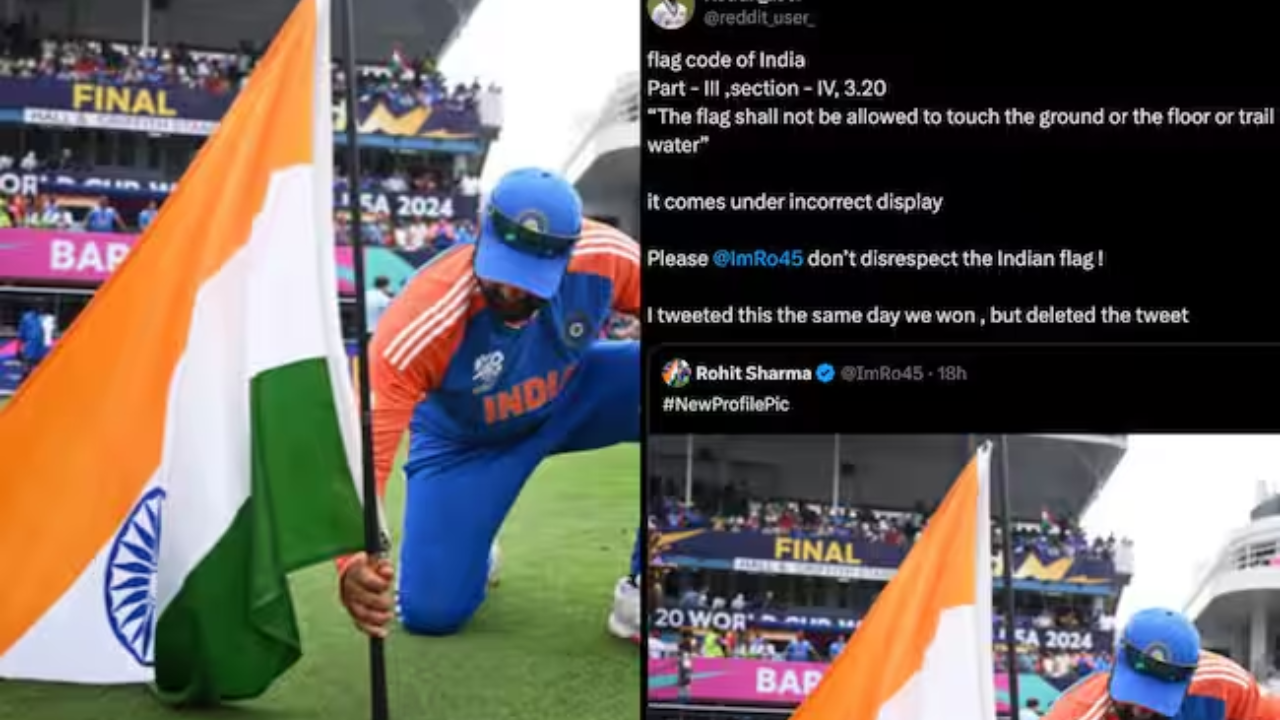The respected captain of the Indian cricket team, Rohit Sharma, is dealing with criticism following his country’s historic triumph in the T20 World Cup in Barbados. In the middle of the celebration of India’s victory, Sharma’s decision to change his profile image on the social media site X has sparked debate and charges of contempt for the Indian flag.
Sharma is shown in the controversial profile photo raising the Indian flag at Kensington Oval following India’s convincing victory over South Africa in the tournament final. Although Sharma meant the gesture to honor the team’s hard-won victory and India’s cricketing ability, criticism quickly surfaced about what was seen as improper handling of the flag, particularly the part of the tricolor that appeared to touch the ground.
Critics expressed dissatisfaction and charged Sharma of disrespecting the sacredness of a sign that is revered by millions of people, citing the Prevention of Insults to National Honour Act, 1971, which forbids the flag from purposefully touching the ground or floor.
The controversy persists on social media and in cricket circles, even after Sharma attempted to explain his actions in a video released by the Board of Control for Cricket in India (BCCI). He stated that he had taken soil samples from the pitch to mark the victory. The backlash was exacerbated by some critics who saw Sharma’s action as an assertion of territorial ownership on foreign soil.
The incident is now under investigation. Sharma, who was praised for his leadership and crucial part in helping India win the T20 World Cup and win their first ICC trophy in 11 years, is now under investigation. This episode highlights the fine line that public personalities have to walk between honoring national icons and expressing their own opinions, particularly in a time where social media is used to analyze and discuss everything.
As discussions progress, the dispute raises more general questions about the value of national symbols and what constitutes appropriate behavior for public officials. Apart from the domain of cricket accomplishments, the controversy over Sharma’s profile photo has generated conversations about national emblems, social media responsibility, and patriotism.
Future-facing, this episode is a sobering reminder of the challenges public leaders face in managing cultural sensitivity and public expectations. It emphasizes how important it is to pay closer attention to and show respect for national symbols so that they are treated with the highest dignity both at home and abroad.
Although Sharma has made enormous contributions to Indian cricket, this controversy brings attention to the persistent difficulties public people confront in striking a balance between their right to express themselves and their sense of national identity. In today’s globalized society, it demands a greater comprehension and appreciation of cultural nuances.





